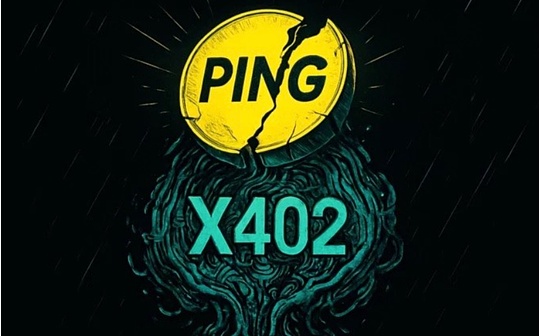
Author: Zhang Feng
Today, as the wave of digitalization sweeps the world, the concept of “KYC” has long transcended its traditional boundaries. It has gradually evolved from the compliance process of financial institutions to the standard for user management of Internet platforms.However, most platforms’ understanding of KYC still remains at the level of “compliance tools”—a one-way, static, closed identity verification mechanism.The platform completes the “understanding” of the user’s identity by collecting the user’s identity document, mobile phone number, email and other information. Its core purpose is to meet regulatory requirements and prevent risks, rather than truly serving user value.This kind of KYC is essentially a “defensive” strategy. It builds a wall of data but fails to build a bridge of value.
realKYC, should not stop at compliance, but should point to value.It should not be a one-time identity collection, but a dynamic process that continuously understands user behavior, respects user rights, and returns data sovereignty to users.It means the transition from “Know Your Customer” to “Keep Your Customer Value” – continuously protecting and amplifying the value of users.The key to realizing this transformation is to liberate users’ behavioral data from “isolated islands” and build a win-win “value network” for users, merchants, and the ecosystem through quantification, rights confirmation, and circulation.

1. From “data recording” to “value co-creation”: reconstructing the logical basis of KYC
In the traditional Internet model, the platform is the “monopoly” of data.Users book tickets on airline apps, check in on hotel mini-programs, and write reviews on OTA platforms—every behavior is recorded by the system, but is rarely given real value.These data are sealed in their own servers, forming “data islands.”Users have neither sovereignty nor profit over the data they create. The platform optimizes its own services and increases advertising revenue through data, while users, as the source of data, are reduced to passive “data providers.”
realKYC, the starting point is to recognize that user behavior itself is a kind of value creation.Every consumption, every sharing, every interaction and participation should be seen, measured and rewarded.This requires the platform to redefine “valuable behavior” and establish a fair and transparent value measurement system.
Unify value measurement: issue ecological certificates.We propose to issue a blockchain-based “cultural tourism pass” as the “universal currency” for the entire ecosystem.It is no longer a platform’s private points, but a value carrier that circulates across scenarios.The essence of the token is a digital mapping of user behavior and a concrete expression of the user’s contribution to the ecosystem.
Define “valuable behavior” and quantify it.For example, consumption behavior: spend 100 yuan in an alliance hotel, and you will be rewarded with 1 pass; purchase tickets for scenic spots, and be rewarded with 2 passes; interactive contribution behaviors: publish high-quality travel notes, and be rewarded with 5 passes; complete designated route check-ins, and be rewarded with 3 passes; provide suggestions and be adopted, and be rewarded with 10 passes.
These actions are automatically triggered through APIs and smart contracts, and are recorded on the blockchain. The process is transparent and cannot be tampered with.At this time, KYC is no longer a one-time identity registration, but a continuous behavior record and value mapping.What the platform “understands” is no longer static identity tags, but dynamic and quantifiable user value contributions.Users transform from passive “data objects” to active “value co-creators”.
2. From “Platform Ownership” to “User Sovereignty”: Reshaping the Trust Mechanism of KYC
Under the traditional model, even if user behavior is recorded, the ownership of the data still belongs to the platform.Users cannot carry it, transfer it, or use it across platforms.This kind of “pseudo-KYC” essentially locks users within walls, forming a kind of implicit “digital slavery.”True KYC must complete the qualitative change from “data” to “assets” and achieve the return of data verification and user sovereignty through technical means.
Create a user digital identity (DID).Users no longer log in with mobile phone numbers or email addresses, but with a decentralized identity.This DID is the user’s “passport” in the digital world, which is completely controlled by the user and does not rely on any centralized platform.DID is not only an identity identifier, but also a symbol of user sovereignty in the digital world.
assets andDIDBinding.Every “Cultural Tourism Pass” earned by a user is automatically sent to the digital wallet bound to its DID through a smart contract.The NFT badges obtained by users (such as “Gourmet” and “Adventure Pioneer”) are also collected under their DID names.These assets are recorded on the chain, and their ownership is clear and inalienable.
resultThe data no longer belongs to the platform, but is converted into digital assets belonging to the user’s DID.The platform can use data optimization services, but the ownership, control and income rights of the assets are all in the hands of the users.This is true KYC: not just “know your customer” but “respect your customer” – respecting their rights, recognizing their value, and returning ownership of that value to them.
3. From “Island of Rights and Interests” to “Circulation Ecosystem”: Unleashing the Value Potential of KYC
If a user’s asset can only be used on a single platform, it will still be a token in a “digital cage” and cannot truly unlock its value.True KYC must promote the free circulation of assets within the ecosystem and become “universal rights and interests” across merchants, scenarios, and applications.
Tokens serve as “universal currency”.For example, the tokens accumulated by flying can be used to deduct rent at car rental agencies; the tokens obtained by writing reviews can be exchanged for NFT digital souvenirs at cultural and creative stores; users who hold a large number of tokens can give priority to purchase special experience tickets for popular scenic spots.
NFT serves as a “universal equity certificate”.For example, users who own the “Historical Research Party” SBT (Soul Binding Token) can automatically get a professional audio guide when going to a history museum in another city; users who hold a hotel’s “Diamond Membership NFT” can also enjoy shopping discounts at cooperative scenic spots.
Data (via SBT) as a “credit and preference asset”.Users can choose to authorize the B&B to view their SBT information (such as “No Damage Record”, “Quality Creator” badge), quickly pass the reservation based on trusted data, and receive benefits.
At this time, KYC is no longer an exclusive tool of the platform, but a “value ID card” managed independently by users.It carries not only identity, but also credibility, preferences, history and rights.With their DID and on-chain assets, users can seamlessly travel throughout the entire ecosystem and enjoy personalized, high-value services.By accessing this open network, the platform can obtain more diverse user profiles and more precise marketing channels.
4. Technical and commercial basis for realizing value KYC
Building such a user-centered value network is inseparable from a solid technical architecture and business collaboration mechanism.
Alliances and Standards.A “Cultural Tourism Digital Ecological Alliance” needs to be established, with industry leaders, technology platforms and standards organizations participating to formulate token economic models, data interface specifications and mutual recognition agreements.Only by establishing unified standards can we break down platform barriers and achieve cross-scenario interoperability.
The bottom layer of the blockchain.As a trusted clearing layer, it ensures that the issuance and circulation of all tokens and NFTs are open and transparent.The choice of consortium chain or public chain needs to take into account performance, cost and compliance requirements to ensure that data cannot be tampered with and transactions can be traced.
Smart contracts.Automatically execute reward issuance, equity exchange and account sharing rules without the need for an intermediary.Code is law, and transparent execution of contracts is the key to building user trust.
User wallet.A unified, non-intrusive and secure wallet, embedded in Apps or mini-programs, to manage DID, tokens and NFTs.The user experience should be “intangible technology and tangible value”, so that users can easily manage their digital assets without understanding the underlying technology of the blockchain.
5. The ultimate goal of KYC—returning to human value
Traditional KYC is for compliance and platform security.The true KYC is not only for compliance, but also for value and the dignity of users.
for users, every consumption and participation is the starting point for accumulating personal digital assets.These assets can be “carried around” and exchanged for real and diverse rights and interests in the entire ecosystem, truly realizing “my data, my assets, my rights and interests”.Users’ efforts and contributions in the digital world are continuously recognized, and their status has been upgraded from “passive consumers” to “active value co-builders”.
For merchants, they have access to a highly sticky user network, obtain precise customers and marketing channels through issuing rights, and obtain revenue sharing by serving other ecological users.Merchants no longer need to spend huge sums of money to build their own membership systems, but share an open and active digital economy.
for ecology, building a powerful value closed loop.Users stay because the assets can be circulated, and merchants join because of the gathering of users, forming a self-reinforcing and constantly expanding digital community.Data and value flow freely in the ecosystem, driving the entire industry from “zero-sum competition” to “symbiosis and win-win”.
This is no longer an isolated “data wall”, but an open, symbiotic, and prosperous value network.Here, KYC is no longer a threshold, but a bridge – connecting behavior and value, users and merchants, data and rights.It redefines the relationship between platforms and users, and also reinterprets the meaning of “trust” in the digital age.
realKYC, not for compliance, but for value—for every user’s value to be seen, respected, and amplified.In the future digital ecosystem, only those organizations that truly understand and practice this concept can win the long-term trust of users, continue to create value and lead change in fierce competition.






